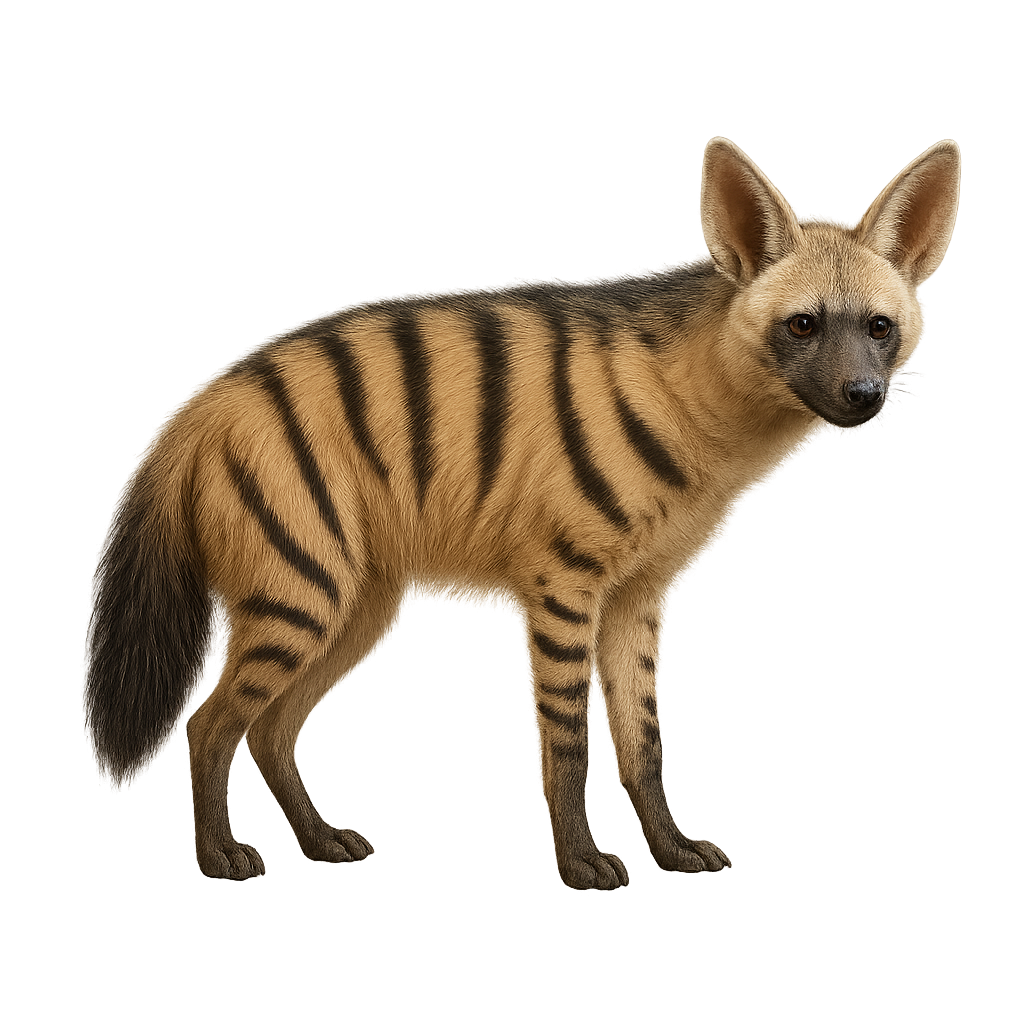Your wildlife photography guide.
Explore the aardwolf in detail, study its behavior, prepare your shots.
Where to observe and photograph the aardwolf in the wild
Learn where and when to spot the aardwolf in the wild, how to identify the species based on distinctive features, and what natural environments it inhabits. The WildlifePhotographer app offers tailored photography tips that reflect the aardwolf’s behavior, helping you capture better wildlife images. Explore the full species profile for key information including description, habitat, active periods, and approach techniques.
Aardwolf
Scientific name: Proteles cristata

IUCN Status: Least Concern
Family: HYAENIDAE
Group: Mammals
Sensitivity to human approach: Suspicious
Minimum approach distance: 10 m
Rut period: July to August
Gestation: 85-92 jours
Births: September to November
Habitat:
savannah, grasslands, arid areas
Activity period :
Mainly active at night, generally discreet during the day.
Identification and description:
The aardwolf, or Proteles cristata, is an insectivorous mammal belonging to the Hyaenidae family, although it differs from hyenas by its diet, which mainly consists of termites. It is recognizable by its striped coat, erect mane, and slender build. Aardwolves are primarily nocturnal, allowing them to avoid the daytime heat in the arid and semi-arid regions of East and Southern Africa where they reside. They dig burrows to rest and protect themselves from predators. Although solitary, they can be observed in small family groups. Their ability to digest termites is aided by a long, sticky tongue.
Recommended lens:
400mm – adjust based on distance, desired framing (portrait or habitat), and approach conditions.
Photography tips:
To photograph the aardwolf, focus on nighttime hours, as this animal is primarily active at night. Use a telephoto lens of at least 400mm to capture detailed images from a distance without disturbing its natural behavior. Be patient and wait for it to emerge from its burrow or move around in search of termites. A tripod can be helpful to stabilize the camera in low-light conditions.
The WildlifePhotographer App is coming soon!
Be the first to explore the best nature spots, track rutting seasons, log your observations, and observe more wildlife.
Already 1 430 wildlife lovers subscribed worldwide

